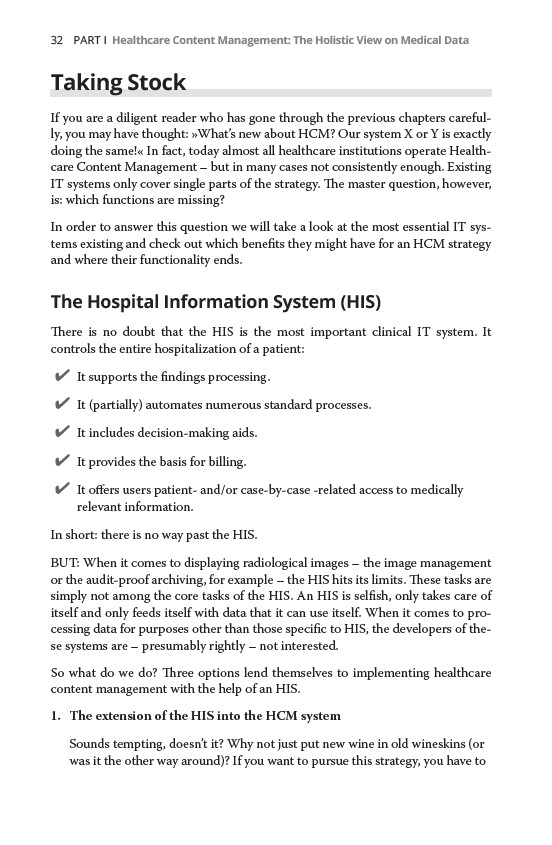
32 PART I Healthcare Content Management: The Holistic View on Medical Data
Taking Stock
If you are a diligent reader who has gone through the previous chapters carefully,
you may have thought: »What’s new about HCM? Our system X or Y is exactly
doing the same!« In fact, today almost all healthcare institutions operate Healthcare
Content Management – but in many cases not consistently enough. Existing
IT systems only cover single parts of the strategy. The master question, however,
is: which functions are missing?
In order to answer this question we will take a look at the most essential IT systems
existing and check out which benefits they might have for an HCM strategy
and where their functionality ends.
The Hospital Information System (HIS)
There is no doubt that the HIS is the most important clinical IT system. It
controls the entire hospitalization of a patient:
✔✔ It supports the findings processing.
✔✔ It (partially) automates numerous standard processes.
✔✔ It includes decision-making aids.
✔✔ It provides the basis for billing.
✔✔ It offers users patient- and/or case-by-case -related access to medically
relevant information.
In short: there is no way past the HIS.
BUT: When it comes to displaying radiological images – the image management
or the audit-proof archiving, for example – the HIS hits its limits. These tasks are
simply not among the core tasks of the HIS. An HIS is selfish, only takes care of
itself and only feeds itself with data that it can use itself. When it comes to processing
data for purposes other than those specific to HIS, the developers of these
systems are – presumably rightly – not interested.
So what do we do? Three options lend themselves to implementing healthcare
content management with the help of an HIS.
1. The extension of the HIS into the HCM system
Sounds tempting, doesn’t it? Why not just put new wine in old wineskins (or
was it the other way around)? If you want to pursue this strategy, you have to